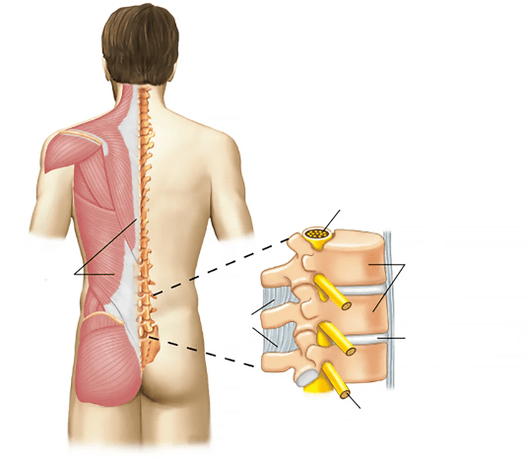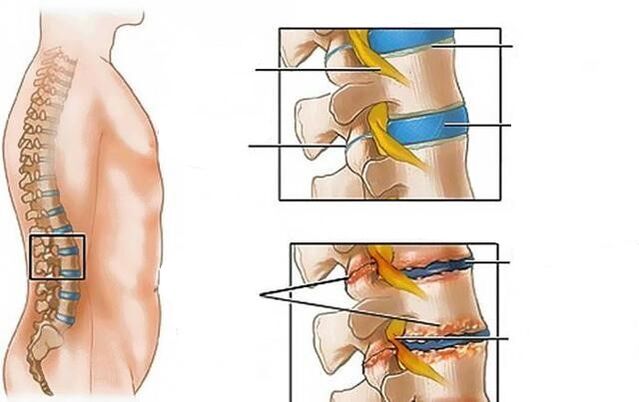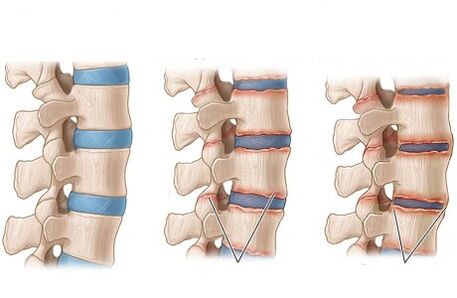Often, low back pain indicates the development of pathology, including the beginning of an inflammatory process. If treatment is not started on time, the symptoms will progress and it will be more difficult to restore health. In this article you will learn about the causes and treatment of low back pain.
If treatment is not started on time, the symptoms will progress and it will be more difficult to restore health. In this article you will learn about the causes and treatment of low back pain.
Features of low back pain
By nature, pain is divided into 3 types:
Chronic.A person feels discomfort during any physical activity - bending, climbing stairs or bending the body. During an exacerbation, the pain may intensify and spread to different parts of the body.
Sharp.Occurs when the disc is dislocated and is characterized by sharp pain in the lower back. Movement is limited, the person can not get out of bed, it is difficult to walk or bend.
It hurts.It is accompanied by unpleasant feelings that do not last long. As a rule, excruciating pain signals the development of diseases of the kidneys, urogenital system. Osteochondrosis, spondyloarthritis, spondyloarthritis can also be a symptom.

In addition to low back pain and discomfort, the patient may experience accompanying symptoms:
- muscle weakness;
- loss of urinary and fecal control;
- numbness in the legs;
- increased body temperature;
- chills;
- groin / groin pain;
- violation of the menstrual cycle.
If the discomfort does not last long and you complain of several symptoms at once, it is important to contact a therapist immediately. Only a doctor can correctly diagnose and prescribe treatment.
Causes of back pain
There are two main groups of diseases in which low back pain syndrome develops:
Spinal problems:
Osteochondrosis.Degenerative-dystrophic disease in which the intervertebral discs lose their elasticity and ability to function normally. The disease can be resolved at an early stage with timely treatment. Acute pain aggravated by flexion indicates progressive progression of the disease.

Spondylosis.A spinal disease in which the intervertebral disc is severely depleted and worn out. The cause of the pathology is trauma and increased stress on the spine. A person with spondylosis has difficulty turning the body. The disease is characterized by a slow course, so the result of treatment is often positive.
Scoliosis.Spinal curvature, which can often occur during adolescence due to growth. The disease consists of 4 stages and can manifest itself as back pain.
Lumbago.Sudden shooting pain in the lower back, if a person freezes in an uncomfortable position. Mobility with lumbago is also limited.
Osteoporosis.A serious pathology in which the bone vertebrae are porous and lose their density and elasticity. There may be back pain when lifting weights, changing body positions and other loads.
Systemic joint diseasewhere a person experiences stiffness, pain and tension in the lumbar muscles in the lumbar region. These unpleasant feelings can intensify at night and lead to frequent awakenings. The pain is relieved by exercise and exercise.

Myofascial syndrome.A fairly common disease that develops after prolonged restless posture or physical exertion. A distinctive feature is the presence of trigger (pain) points on the spine or thighs. When pressed on them, a sharp pain occurs.
Diseases of the internal organs:
Appendicitis attack.Depending on the characteristics of the human body, the pain may appear on the right side and be transmitted to the lower back.
Inflammation of the kidneys.In the case of impaired renal function, the main symptom is a tingling and unpleasant pain in the lower back. It may also be accompanied by the appearance of edema and an increase in body temperature.
PancreatitisWith the development of this disease, a person may experience nausea, vomiting and stomach upset. If the back pain is caused by pancreatitis, the pain does not increase on palpation of the spine.
Cholecystitis.The pain is localized in the right hypochondrium and spreads to the lumbar region. Lumbago and lumbar discomfort indicate that the spinal nerve fibers are involved in the pathological process.
EndometriosisA gynecological disease in which the layer of the uterine wall grows beyond the boundaries of the inner cells. The woman has pain in the lower back.
Obesity.Excess weight puts unnecessary stress on the spine and intervertebral discs. As a result, they are deformed and collapse. A person feels uncomfortable walking for a long time or climbing stairs.
Oncology.Back pain can occur when there is a benign or malignant tumor. Many "absorb" calcium, there is a deficiency in bone structures, they become thinner.
Physiological causes of back pain
Hypothermia. Prolonged exposure to fresh air in cold weather can cause numbness in the waist. At the same time, the discomfort increases during bending, movement and rotation. Sometimes it can give on the legs or back.
Critical days. During menstruation, about 50% of women experience discomfort and tightness in the lower abdomen that extends to the lumbar region. As a rule, anxiety disappears after the end of the period.
Excessive load. Excessive weight lifting and too much stress in the lumbar region causes painful sensations.
Climax. During menopause, a woman's body loses levels of estrogen, a hormone that regulates recovery processes. Bone tissue loses its ability to fully recover. They become fragile.
Uncomfortable shoes. Wearing high heels and tight shoes will tighten the blood vessels in your feet. The result is painful back pain.
Lack of physical activity. A sedentary lifestyle and lack of exercise cause chronic back pain. Muscles atrophy and lose their natural elasticity.
Diagnostics
First, the doctor sees the patient and examines him. Determines the passage of general chemical analysis (blood and urine donation). To get an overview and rule out serious pathological changes, it is recommended to go through the following:
KT.A modern diagnostic method that can detect the development of pathology at an early stage. Clearly visualizes all bone structures
MRI.Indicates the condition of soft tissues and cartilage. In addition, MRI is used to diagnose tumors, intervertebral hernias and changes in blood vessels.
X-ray.Provides information about changes in the bone structure of the spine, indicates the presence of caries, micro-cracks and helps to detect spinal pathologies.
Ultrasound.It allows to determine the condition of the internal organs, as well as to detect inflammatory processes.

Based on the information received, the doctor diagnoses and prescribes treatment. If necessary, it is recommended to be examined by other specialists: gynecologist, endocrinologist, gastroenterologist.
How to treat back pain
Treatment methods depend on the disease and are determined individually. As a rule, complex therapy is the most effective. Generally recommend:
- avoid heavy lifting;
- Take B vitamins and calcium;
- use a supportive bandage;
- swim, move more, or take a medical gymnastics course;
- take corticosteroids to relieve severe inflammation (as directed by your doctor);
- Muscle relaxant to relieve spasms.
Depending on the cause of the disease, the doctor may prescribe bed rest or, conversely, an increase in physical activity. For example, if the nerves are constricted, passive rest is recommended. For some muscle spasms, massage and exercise moderately. Also, treatment methods include:
Physiotherapy. The affected area includes a number of physical impact methods. It improves microcirculation, eliminates edema and spasms, and has an anti-inflammatory effect.
Manual therapy.An alternative type of medicine used to treat the musculoskeletal system. The specialist finds the place where the nerves are constricted and helps to relax the spasmodic muscles. On the contrary, it tones very comfortable places.
Acupuncture.Helps relieve pain using special needlesIt is injected into the active points of the body and spine. Muscles relax and the spine becomes healthier.
If conservative therapy fails, a neurosurgeon should be consulted. Often, surgery is prescribed for intervertebral hernias that cause spinal cord damage and radicular pain.
What to do for severe back pain
The patient is given a blockade for unbearable acute back pain. A procedure in which a doctor injects a painkiller into an area where pain has occurred or where a nerve fiber has passed. This radical method temporarily relieves pain. In addition, a specialist may prescribe antibiotics, immunomodulators and chondroprotectors.
Do not treat or tolerate severe back pain. This can lead to fatal consequences, including disability or death.
Prevention and prognosis
Try to keep a balance between work and play. A sedentary lifestyle and lack of physical activity are the main causes of back pain.
If you work all day on the computer or drive, try to find time to exercise or go for a walk. You do not need to spend two hours in the hall. You can do it at home by choosing a possible exercise from yoga, fitness or Pilates.
Carry weights in your backpack. This will help distribute the load evenly around your waist and prevent it from tearing. When lifting something heavy, bend your legs, not your back. If you need to reach from above, use a ladder or chair.
Massage. Visit a massage therapist twice a year and take a massage course of at least 10 sessions. This will help relieve muscle spasms and improve overall health.
Get an orthopedic mattress and pillow. In a dream, a person spends ⅓ part of his life. Make sure you feel comfortable and completely relaxed during this time. Buy products at an orthopedic salon after consulting the seller.
Pay attention to traditional medicine and self-medication to avoid harming yourself. If you need expert help, you can contact our clinic. Leave a request or call to make an appointment.























